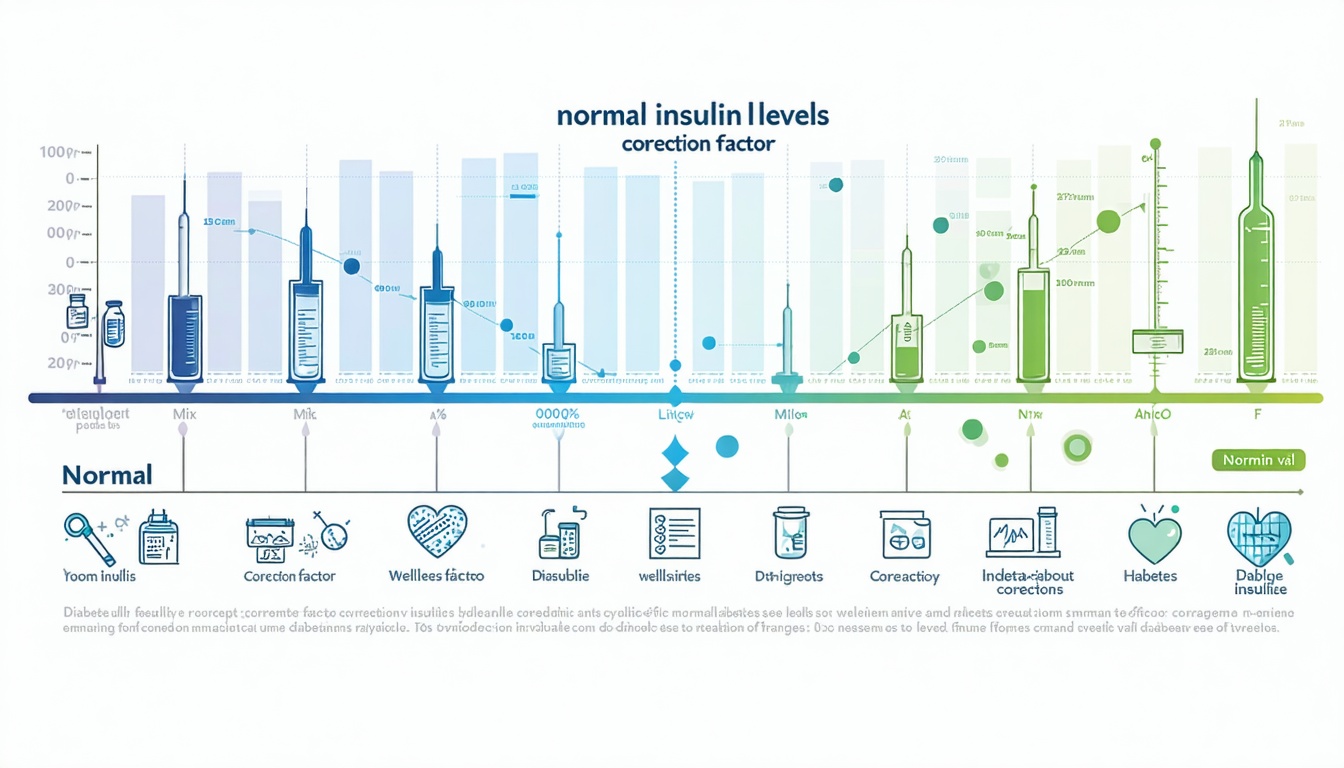Normal Insulin Levels: Your Key to Managing Diabetes
If you’re trying to manage your blood sugar more smoothly, having a clear understanding of normal insulin levels is a smart first step. After all, insulin’s job is to transport glucose (your main energy source) from your bloodstream into your cells. But how do you know if your levels are on track, and why does it matter? Let’s clear up the essentials, explore the importance of the insulin correction factor, and look at practical tips for keeping your levels balanced.
Get Familiar With Insulin Basics
Insulin is a hormone created by the beta cells in your pancreas. When you eat and your blood glucose rises above a certain point (about 5 mM), your body typically releases insulin to help regulate those sugars. According to the Cleveland Clinic (source), insulin also plays a role in fat storage and can affect processes like bone growth and even brain function.
- Insulin pushes glucose into cells, providing energy.
- Too little insulin (in Type 1 diabetes) leads to high blood sugar.
- Too much insulin, often driven by insulin resistance, can lead to hyperinsulinemia.
Recognize Normal Insulin Levels
The phrase “normal” can be tricky because ranges vary by individual factors such as age, metabolism, and medical history. However, fasting insulin levels under 25 mIU/L are often cited as a typical reference point (Medscape). If you want a deeper dive into ranges for women specifically, take a peek at what is a normal insulin level for a woman.
Why Levels Matter
Your pancreas can usually adapt to changing blood sugar demands, but if it needs to produce more insulin due to insulin resistance, you might first develop prediabetes before heading toward Type 2 diabetes. The Centers for Disease Control (CDC) notes that 1 in 10 Americans have diabetes (source), underscoring how common these issues have become. When insulin and glucose levels stay balanced, it lowers the risk of cardiovascular trouble, kidney problems, and nerve-related complications.
Consider The Correction Factor
You might also see mention of an “insulin correction factor,” which helps fine-tune your insulin dose when your blood sugar veers out of range. Essentially, it tells you how many points (mg/dL) one unit of insulin will reduce your blood glucose. If you’d like to explore this topic in detail, check out insulin correction factor.
How It Works
- You measure your current blood sugar level.
- You subtract your target blood sugar (for example, 100 mg/dL).
- You divide the difference by your correction factor to figure out how much insulin to add.
This approach is especially handy if you deal with unpredictable spikes or if you’re adjusting your meal-time insulin dose.
Learn Factors Affecting Levels
Numerous elements can nudge your insulin levels around, from eating high-glycemic foods to not getting enough exercise. Genetics can play a role too, especially if you have a family history of diabetes or insulin resistance.
Differences In Women
Fluctuations in hormones like estrogen can influence how your body responds to insulin. Women with conditions like PCOS may experience higher insulin levels, which can lead to other health issues. To learn more about how insulin resistance might impact women differently, see insulin resistance in type 1 diabetes or check out what is prandial insulin if you want more info on meal-related insulin needs.
Maintain Healthy Insulin Levels
Lifestyle changes go a long way toward helping your body respond to insulin in a healthy way. The Cleveland Clinic recommends staying active, watching portion sizes, and including more whole grains and veggies in your meals.
- Aim for regular physical activity: even a daily walk can boost insulin sensitivity.
- Keep stress in check: stress hormones can raise your blood sugar.
- Choose balanced meals: include protein, fiber, and healthy fats to avoid big spikes.
- Maintain a healthy weight: excess body fat, especially around your midsection, often worsens insulin resistance.
These steps can reduce the odds of sliding into prediabetes or Type 2 diabetes.
Review Key Takeaways
- Insulin is crucial for shuttling glucose to your cells and keeping blood sugar balanced.
- Typical fasting insulin levels under 25 mIU/L are commonly considered within a standard range.
- The insulin correction factor helps you adjust insulin dosage when blood sugar levels stray too high.
- Multiple factors, including genetics, gender, and lifestyle habits, affect insulin response.
- Staying active, eating well, and keeping stress under control are powerful ways to maintain healthy insulin levels.
By understanding your normal insulin levels and making a few lifestyle tweaks, you’ll go a long way toward boosting your overall health. If you have any lingering questions or want personalized advice, it’s always smart to check with your healthcare provider.
Image Credit







Leave a Reply